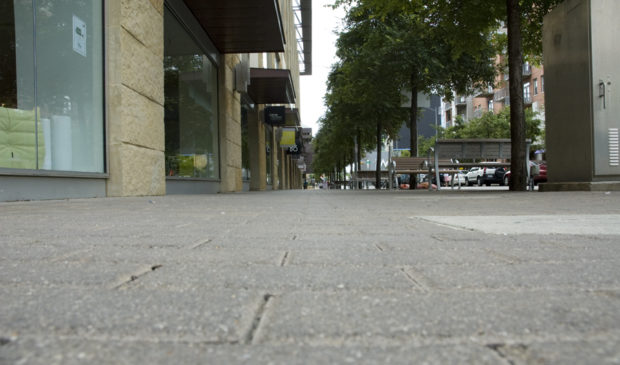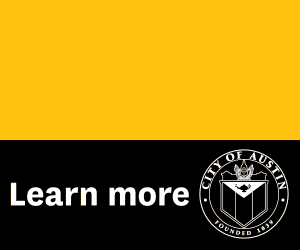Downtown vacancies eyed for arts activations, tenants with new pilot program
Tuesday, May 11, 2021 by
Chad Swiatecki Vacant storefronts in downtown Austin could become temporary homes for arts and creative organizations beginning this summer thanks to a pilot program under development by the Downtown Austin Alliance Foundation.
The foundation is currently working on a lease agreement with the AMLI Residential real estate company to temporarily take over up to three vacant spaces on Second Street between Colorado and Lavaca streets. The goal of the program would be for the foundation to sublease the properties to arts groups for just the monthly utility cost, providing needed space for creatives, and in effect marketing the properties for potential tenants.
The foundation began conversations with property owners throughout downtown, which has seen a dramatic uptick in vacancies over the past year due to the Covid-19 pandemic, which eliminated nearly all tourism and a majority of the foot traffic generated by downtown workers.
Those talks spurred the thinking that led to an eight-week activation at the former Caffe Aragona space on Congress Avenue, facilitated by the nonprofit Raasin in the Sun, in which eight visual artists took over the space for events and work space. While the DAA Foundation didn’t help broker that partnership, which ran from early March through the end of April, Executive Director Molly Alexander said the fact that the space is now under lease proves that bringing arts groups into open spaces can reap benefits for both sides.
“Vacant storefronts are costly to everyone in the community because people walk by it and it’s not engaging you,” she said. “We know in Austin a lot of people for a lot of years have been trying to crack the nut of finding affordable spaces for artists, musicians and the creative class. We wanted to start the conversation around having this issue of the pandemic and make it work by figuring out what it looks like from the property owners’ side.”
The foundation is in talks with other property owners throughout downtown on similar agreements, with the hope that the eventual lease with the publicly traded AMLI group can serve as a blueprint. Alexander and her staff are also pursuing grants or other funding that could help to cover the monthly subleasing costs.
The Downtown Austin Alliance recently put out its annual state of downtown report and a recovery road map for the area that included temporary occupation and activations of vacant spaces as one of its four core strategies.
Alexander said there is likely to be space available for creative groups for roughly a year or more because new leased tenants can take from six to 18 months to move into a retail space after they legally take it over.
“We’ve realized we might have a niche here, but didn’t realize the challenge for the property owners’ side,” she said. “Because we have a greater amount (of vacancies) on the street than we typically see had there not been a pandemic, we’re beginning to realize that even if there is some lease activity it doesn’t mean a lease is going to occur, especially in spaces that are a little bit harder to fill.”
For outreach, the foundation is relying on a network of local arts organizations to find potential occupants, with no formal application process expected in the short term.
Also related to downtown recovery, the foundation is looking for sponsors to help raise at least $10,000 to fund an extension of the downtown busking program that is slated to end this month. The current busking program, one of three launched by the organization in the past year, has paid out nearly $30,000 to local musicians.
Alexander is working with the city’s Music and Entertainment Division to find a way to allow musicians to busk with amplification so they can be effectively heard over street noise while observing social distancing guidelines.
“We all know that music and sound, and complaints around noise, should be separated. In talking with the city about what’s permissible during the day versus at night … if you’ve got buses going by and are trying to maintain 6 feet of distance because of Covid social distancing, that needs to be amplified,” she said. “You want it to be a great experience for everybody, particularly the musician who’s out there on the street busking for their livelihood. We need to create an environment where (amplification) is allowed by right in a way that supports the community.”
Photo made available through a Creative Commons license.
The Austin Monitor’s work is made possible by donations from the community. Though our reporting covers donors from time to time, we are careful to keep business and editorial efforts separate while maintaining transparency. A complete list of donors is available here, and our code of ethics is explained here.
You're a community leader
And we’re honored you look to us for serious, in-depth news. You know a strong community needs local and dedicated watchdog reporting. We’re here for you and that won’t change. Now will you take the powerful next step and support our nonprofit news organization?











